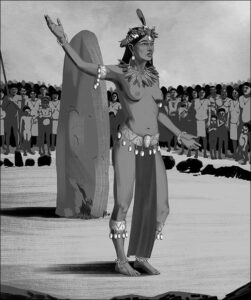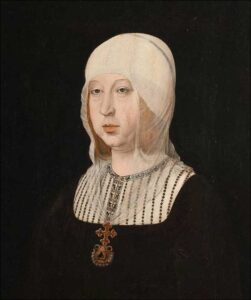Women rulers were uncommon in both Taíno chiefdoms and European kingdoms during the fifteenth century. Nevertheless, the events related in Columbus and Caonabó: 1493–1498 Retold were significantly shaped by two women renowned in history—Spain’s Queen Isabella and the future chieftain Anacaona, then Caonabó’s premier wife.
Isabella’s marriage with Ferdinand united the kingdoms of Castile and Aragón to make Spain. She stood at the height of her power by 1493, having achieved with Ferdinand a Christianization of Spain she held dear—by reconquering the Emirate of Granada from its Mohammedan rulers, establishing the Inquisition to root out false Christians (i.e., converted Jews), and expelling the Jews (all as related in Encounters Unforeseen: 1492 Retold). Columbus and Caonabó depicts her oversight of the conquest of the “Indies” that Columbus proclaimed in her name—her fourth signature legacy—including her initial decisions regarding enslavement of indigenous Caribbean peoples.
Parallel to Isabella’s royal lineage, Anacaona was born into the ruling family of the Tainó chiefdom of Xaraguá (in modern Haiti), and her marriage with Caonabó prior to 1492 (also portrayed in Encounters Unforeseen) allied his neighboring chiefdom of Maguana (in the modern Dominican Republic) with Xaraguá. Perhaps fifteen years younger than Isabella, by 1492 Anacaona was acclaimed both as a poet and the island’s most alluring woman. Columbus and Caonabó depicts her rising influence and resolve to preserve Taíno civilization as the conflict between Caonabó and Columbus escalates.
Columbus and Caonabó contains a newly drawn sketch of Anacaona (by the Dominican illustrator Boris De Los Santos) and a copy of the portrait of Isabella hanging in Madrid’s Royal Palace, both shown below.


